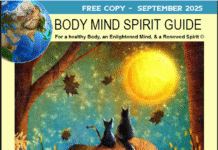by Jen Romanowski
Addiction. For many of us, the word immediately brings to mind alcohol, drugs, or cigarettes. But what if I told you that addiction wears many masks—and not all of them are as obvious as a bottle or a pill? The truth is, addiction is less about what you’re addicted to and more about the behavior patterns and internal struggles driving it.
In spiritual and holistic circles, we often focus on healing the mind, body, and spirit. But sometimes, we miss the ways certain behaviors quietly seep into our lives, becoming just as damaging as any substance. Let’s pull back the curtain and explore the overlooked face of addiction.
Addiction Isn’t Just About Drugs or Alcohol
We often think of addiction as something that happens to other people—those who drink too much, gamble, or get caught up in illegal drugs. But addiction can also show up in everyday behaviors that feel “normal” or even socially acceptable.
Some common non-substance addictions include:
- Food: Emotional eating, binge eating, or using food to cope with stress.
- Sex and Love: Obsessive relationships, chasing unavailable partners, or seeking validation through intimacy.
- Co-Dependency: Becoming addicted to helping or “fixing” others, often to the detriment of your own needs.
- Social Media: Endless scrolling, comparing, and craving likes and validation.
- Chaos: Stirring up drama, crisis, or constantly keeping yourself in a state of overwhelm.
These behaviors might not come with a warning label, but they can be just as consuming and destructive as any chemical substance.
The Hidden Behaviors That Mirror Substance Addiction
Addiction, at its core, is a compulsive behavior that we continue even when it harms us. Whether it involves a substance or not, the patterns look eerily similar:
- Obsession and compulsion: You can’t stop thinking about it, planning it, or doing it—even when you know it’s hurting you.
- Secrecy and shame: You hide the behavior, lie to yourself or others, and feel guilty afterward.
- Isolation: You pull away from loved ones, communities, and activities that once brought you joy.
- Relationship damage: Friends, family, and partners may feel pushed away, used, or neglected.
The behavior might be different, but the emotional rollercoaster remains the same.
Why It’s So Hard to Stop—Even When We Know It’s Hurting Us
Have you ever tried to stop doing something you know isn’t good for you, only to find yourself back at it days, hours, or even minutes later? That’s the nature of addiction. It’s not just a bad habit; it’s a deeply rooted survival strategy.
Our brains love patterns and predictability. Even if the behavior makes us feel terrible afterward, the temporary escape or relief it offers is powerful. Like a moth to a flame, we return because, at that moment, it fills an emotional void, numbs pain, or gives a fleeting sense of control.
Trauma, unmet needs, and chronic stress often lie underneath these patterns. And without addressing these deeper roots, simply telling yourself to “just stop” is like trying to patch a sinking boat with duct tape.
Recovery Isn’t Just for “Those People”—It’s for All of Us
Recovery is not reserved for the rock bottom or the person who has “lost everything.” Recovery is for anyone who wants to break free from patterns that no longer serve them. It’s a sacred act of self-love, an opportunity to reclaim your time, energy, and power.
In fact, when we begin to view recovery through a holistic lens, we see that it’s about so much more than quitting a behavior. It’s about returning to yourself. It’s about facing discomfort with compassion and choosing to create new, life-affirming habits that align with your highest good.
The First Sacred Step: Willingness to Change
So, where do you start?
The first step is simple—but not always easy: be willing to change. Notice the patterns in your life that feel compulsive or keep you stuck. Ask yourself:
- “Is this behavior helping or hurting me?”
- “What might I be avoiding or numbing?”
- “Am I ready to try a different path?”
Awareness is powerful, but action is sacred. Change doesn’t have to happen overnight. Begin with one small step. Reach out to a therapist, join a support group, create a ritual to release old habits, or simply tell a trusted friend, “I’m struggling.”
A Holistic Path to Healing and Reconnection
Recovery from any addiction is a deeply personal journey—and there is no one-size-fits-all path. Thankfully, the holistic and spiritual worlds offer an abundance of tools to support you:
- Somatic practices to reconnect with the body.
- Shadow work to explore the hidden parts of self.
- Energy healing and ritual to support spiritual transformation.
- Community circles and support groups to end isolation.
Healing happens in layers, like peeling an onion. Each layer reveals something new, deeper, and more authentic. And through this process, you return home to yourself—whole, worthy, and free.
Addiction isn’t about the thing; it’s about the pain, the need, the pattern. And healing isn’t about perfection; it’s about connection.
No matter what your “thing” is, you deserve to experience the freedom on the other side of it.
Jen Romanowski, a.k.a. Sunshine Witchski —The Pink-haired Sober Witch—has been practicing witchcraft and other esoteric practices for over 25 years. She is a spiritual advisor, recovery mentor, and Creatrix of Illuminate: The Unschool of Sober Witchcraft. Visit www.illuminateunschool.com or text 313-595-4148 for guidance in your recovery. Or check out Amazon for her newly published book, Sober Witch Life: A Magickal Guide to Recovery.











